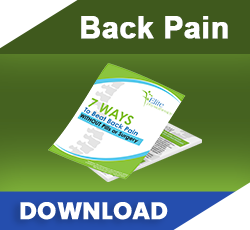Most would agreed that it is vital we do all we can to maintain our health and wellbeing, both physically and mentally, more so now than ever! It is very easy to become sedentary in lockdown, be it that you’re working from home and your longest walk is from your “office” (aka the kitchen table) to the fridge or you’re spending your days binging on Netflix. But now is as good a time as any to create new, healthy habits.
We know exercise is the best medicine and in the current climate of lockdown, running is probably the most easily accessible form of exercise. Between challenges on social media and good weather, our roads and footpaths have never seen so much action! Hand in hand with this sudden increase in activity however, is the increased likelihood of pain and injury.
Most novice runners run too fast, too far and too often and thus spike their training load. If you’re not normally a runner, you need to build up the capacity of your tissues (muscles, bones, joints and tendons) to tolerate running.
We cannot stress the importance of building your training load enough. Too much too soon, doing more than you are prepared for, lacking the strength and tissue capacity to produce and absorb forces can all lead to issues such as a bony stress response, stress fractures and tendinopathies.
One of the key tips that we would give is to build your base. As mentioned before, most novice runners run too fast. Slow, easy runs are essential to maximise your aerobic system (your diesel engine). If you are new to running, spend the next 2-3 months running at a pace where you can maintain a conversation comfortably (Zone 2 Heart rate) or if you’re social distancing on your run, then make sure you can sing to yourself.
In time, you can then add in the likes of tempo or Fartlek runs. Speed work is great for improving your anaerobic energy system (your turbo boost), running faster and subsequently reducing your times. It does however place more strain on your calves, Achilles and hamstrings.
Keep a diary and document either the distance or how long (time) you ran each session. Also jot down how you slept, how good your nutrition was and how good or bad you felt during your run. It doesn’t have to be the most detailed diary, just keep track of the basics. It’s important to remember (and very pertinent currently), that stress, anxiety and/or poor sleep coupled with increased training volume can also increase your risk of injury.
At the end of each week, count up your total mins/kms you’ve ran. An easy way for the less experienced runner to gradually build volume is to stick to the 10% rule: Don’t increase your volume by more than 10% of your previous week.
Rest is essential for all runners. Tendons, bones and other tissues need rest to recuperate, adjust and rebuild. If you feel tired or sore, listen to your body and take adequate rest. But be careful – doing too little can also increase your risk of injury as you are not prepared for what you are undertaking. So make sure to incorporate recovery days into your training but try to be consistent. Running once a week will create a training spike and is unlikely to do enough to improve tissue capacity.
Don’t forget to add in some strength work a couple of times throughout the week, targeting the muscles of this hip, thigh and calf. Strength training has been shown to reduce injury risk, improve running times and will also help to expose those muscles, bones and tendons to load and stimulus.
So if you’ve dusted down those trainers and are out pounding the pavements, our advice to help keep you running is to make sure to minimise week to week changes, be consistent, maintain a minimum training volume and make sure what you are doing is proportionate to what you have done!


